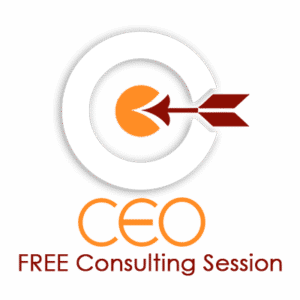
Summary: We are in new territory in the world of work. It’s time to take advantage of the opportunities gained by collaborating rather than condemning.
Dear Dr. Sylvia,
I am having a retreat with my senior staff to discuss the future of work.
I know you believe in leadership programs for everyone.Â
I’m not sure how I feel about the “for everyone.†I always thought it was mainly for senior staff.
In any case, can you give some ideas my team and I can discuss on our day away?
Thanks,
Lifelong Learner
Dear LLL,
We are in a time of hopeful, courageous change.
The future of work will take all of us to rethink priorities.
Think of it this way, the present concepts regarding work were primarily formed in an era when products and services used technology to help the individual worker.
As a result, life was made easier for chefs with the Cuisinart; farmers learned to navigate complex machines to harvest the wheat. With the advent of the stethoscope and thermometer, physicians learned to guess less and trust this handy equipment.
For example, what dozens of people had to do in the past may only require one worker now who knows which buttons to push.
In fact, the needs of society for goods and services can be met by a fraction of the workforce.
In other words, we are at the cusp of leaving behind an inadequate concept of the role of work. We must consider who does what and how to handle the changes in the blink of an eye.
It is obvious today, with the focus on mental health and positive relationships as core to a healthy life at work, we are required to think in new ways as we move forward.Â
Everyone can become a leader of worth at every level of a company.
The key to effective leadership in this century is to help individuals grow and thrive. The future involves a different sense of the whole, where everything is connected, and no one wins unless we all do.
Here is one example to consider as you prepare for what lies ahead in 2023.
What would the workplace and the world be like if we could suspend judgments and enter a real-time of “thinking together?â€
Consequently, I’m talking about a free flow of ideas between us, allowing the discovery of insights unattainable individually.
For this reason, it matters to bring dialogue concepts into your organization and watch the culture become more productive and less fractious.Â
Dialogue is different! It is about relationships, not about winning.
In short, let me point out how we learned to communicate when we were small kids vying for our place at school recess.
As an illustration, arguments, discussion, and problem-solving interactions are the most common forms of dealing with different points of view.
- In arguments, individuals jockey for airtime, even preparing counter-arguments while the other person is speaking. The goal is to dominate, dominate, dominate.
- In discussions, the idea is to share your point of view to arrive at a good solution. However, this often reverts to argument format to prove your point of view wins.
- In problem-solving, the goal is to use data, identify viable options, weigh the options, and choose the best solution. However, this often ends up in the knee-jerk argument model, where winning is still the main attraction.
Dialogue is different! It is the future of work.
For example, there is no intention to initially solve the problem or establish a winning point of view.
Accordingly, the goal is to explore all opinions, accepting that ideas will be complex with solid feelings attached.
This communication model allows you to gain a broader perspective and arrive at a new, more creative, and complete conclusion.
Indeed, this is also a way of demonstrating respect for others, a fundamental building block for solid working relationships.
All things considered, we don’t have many models of dialogue today.
Leadership courses for everyone will teach positive communication skills.
In other words, we seem stuck with many four-letter words to describe our feelings, and when all else fails, we leave, physically by slamming the door on the way out or emotionally by silence or snide remarks.
Here are five steps for effective dialogue. It takes practice and determination.
- Assess the emotional edge under the words. Check out body language and voice velocity. If emotions run high, acknowledge that this will be uncomfortable initially—no shoving feelings under the rug.
- Suspend judgment. Easier said than done. If you want to prove you are right and others are wrong, forget dialogue; it will be ineffective. However, if you can suspend judgment, significant consequences can happen.
- Build a common ground of understanding. List the differences and the areas of agreement. Stay with this even after the first few superficial statements. The gold is about how we do better when we “think slow†and that we all want to be heard and acknowledged.
- Agree to meet again. Important issues need time to germinate and blossom. Learn of the truths that lie under the obvious.
- Take time. This is dead if it is agenda driven with the clock ticking out the minutes. Check about the goals that are clear and important. “What do we want†is a vital dialogue question.
The best leadership programs will give time for practice to become a master.
The new normal will be using dialogue to solve critical work issues. Practice the skill yourself if you want to be ahead of the pack. At first, it might feel awkward (like learning to drive a car); however, you will become more skilled and enhance relationships.
We are in a time of hopeful, courageous change.
What would happen if we all agreed to help each other be the best we can be?
To complete this, I have a little gift for you.
Please click here to watch the mascot of our Total Leadership Connections program, our treasured wombat, underline an essential aspect of life: “We are all connected, and no one wins unless we all do.â€
Here’s to your success,
Sylvia
PS. Our award-winning leadership program is now online, and you can take advantage of a steep discount for the rest of this year. We can help, promise. Contact us a sylvia@ceoptions.com or call 570 233 1042.


